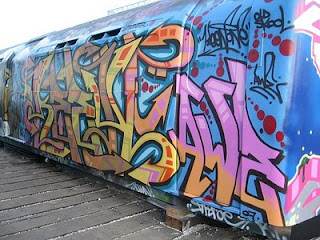Dance is a form of art where the body moves rhythmically to music.
Why is it a form of art?
Dance is self-expression and so is art. When a person dances, they are dancing out of fulfillment and satisfaction. It is their own way of expressing their mood and letting the body become free to express one's emotion. The human movement becomes the medium for understanding, sensing, and communicating ideas, feelings, and experiences.
Dance is broken down into different elements in this worksheet found in the Dance Education Curriculum Guide. These elements, also known as BASTE, can help a person look deeper into the art and get a full understanding of the passion of dancing. These elements include:
- Body
- Space
- Time
- Action
- Energy
Walter Terry commented, "No paints nor brushes, marbles nor chisels, pianos or violins are needed to make this art, for we are the stuff that dance is made of. It is born in our body, exists in our body and dies in our body. Dance, then, is the most personal of all the arts . . . it springs from the very breath of life."
Jo Murphy also describes in his article The Elements of Dance from MPS Arts Rich Community the concepts of BASTE and the art of dance.
The movement of the body in dance is the mobile figure or shape that is seen by others, and felt by the dancer. First time dancers may be a little stiff in the body and not look right while they dance around, but professionals knows how to move, when to move, and create a move, which causes them to dance so gracefully. When I used to take ballet classes, my teacher taught us that the dancer shifts from the inner realm (ideas, intentions,emotions, identity) to the outer realm (expression and communication) of the body continuously.
Fabian Perez "Tango II"
The space and surroundings of the dancer is an important thing to observe. Have you seen a choreography and it just didnt' look right? Maybe the spacing between the dancers were too wide or tight, or the setting didn't even match the concept of the performance. This element is important because the amount of space the dancer uses catches their audience's attention. Although axial movement can be very unique and eye-catching, I personally would not want to watch a dancer stand in one spot during the whole performance; it kind of gets boring. Objects and scenery complements the dancers and give their performance a beautiful effect. It helps others to visualize and feel what the dancer is feeling.
When hearing the word time, often you think of the word "when". Time plays an important role in dancing. Time is the speed and duration of the movement. There are the metered, free rhythm, clock time, and riming relationships. The dancer could dance slow then pick up to a faster rhythm, or their performance could be long of short. Time is used differently when it comes to dancing. Dancers may take cues from each other to start the next step or use a shared sense of sensed time to end a dance all at once.
Action and energy of dancer brings liveliness within their performances. Actions can include a dance step, a gymnastic flip/toss/turn, or even a facial expression. Action for dance does not always require moevment; it can be shown through a pause in the routine and the stillness of the face.
In dance, there are two types of movement that can be combined.
- Locomotor (travelling through space)
- Non-locomotor (axial movement)
This form of art also has many different styles and genres. Some include ballet, ballroom, tango, break-dancing,stree-dancing, tap dancing, etc. The long list of different types of dancing continues, but they all share on common thing, which is sharing the expression and passion of the dancer.
Works Cited
Terry, Walter (1942) . Invitation to Dance. New York: Barnes, 16.
Murphy, Jo. "Developing an Understanding of the Principles and Elements within the Creative Arts." Suite101.com. Suite 101, 16 Dec. 2012. Web. 27 Feb. 2013.
Mirus, Judith. "The Elements Of Dance." Selections from the Dance Education Initiative Curriculum Guide. Golden Valley, MN: Minnesota Center for Arts Education, 1994. N. pag. Print


















